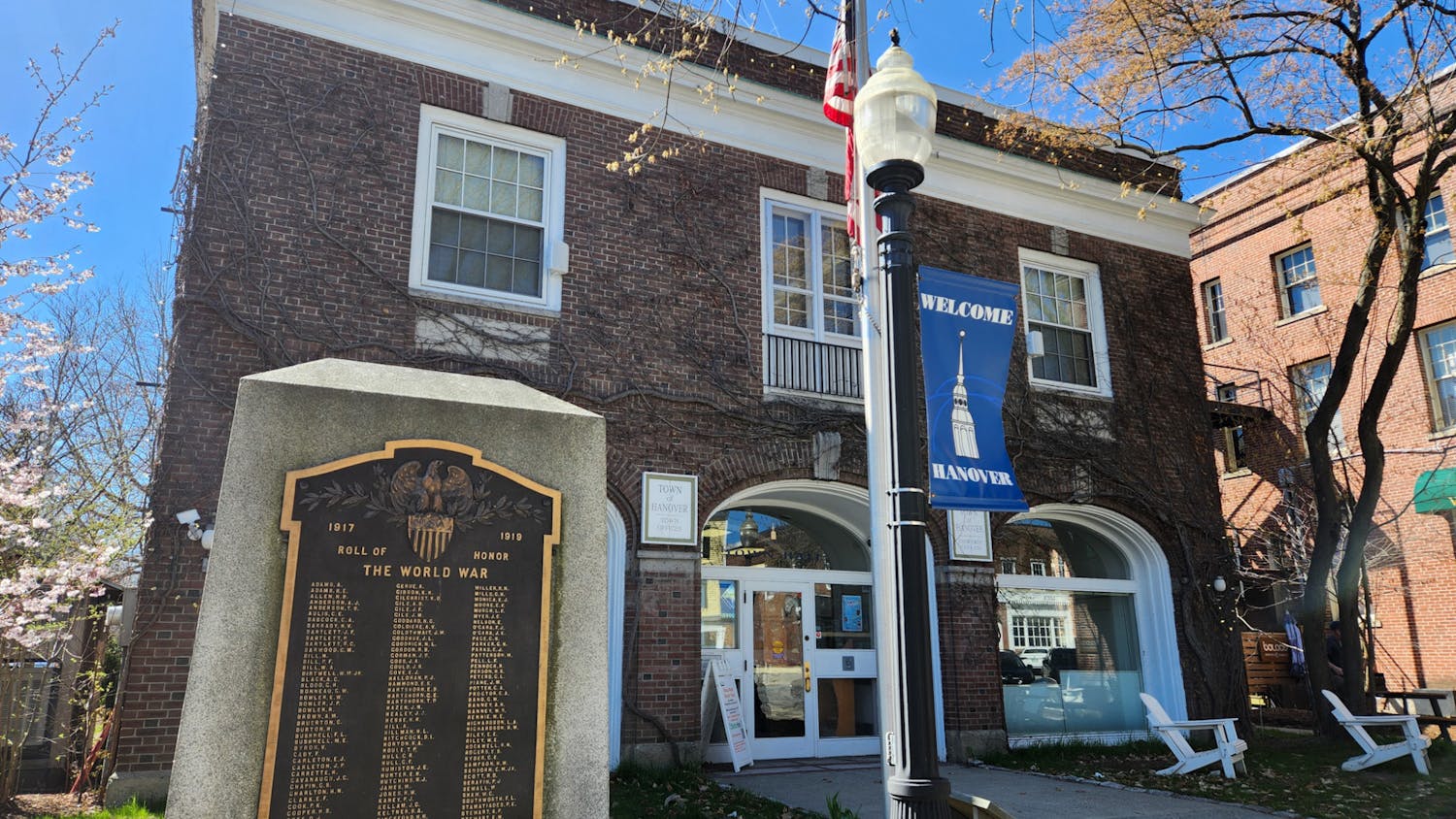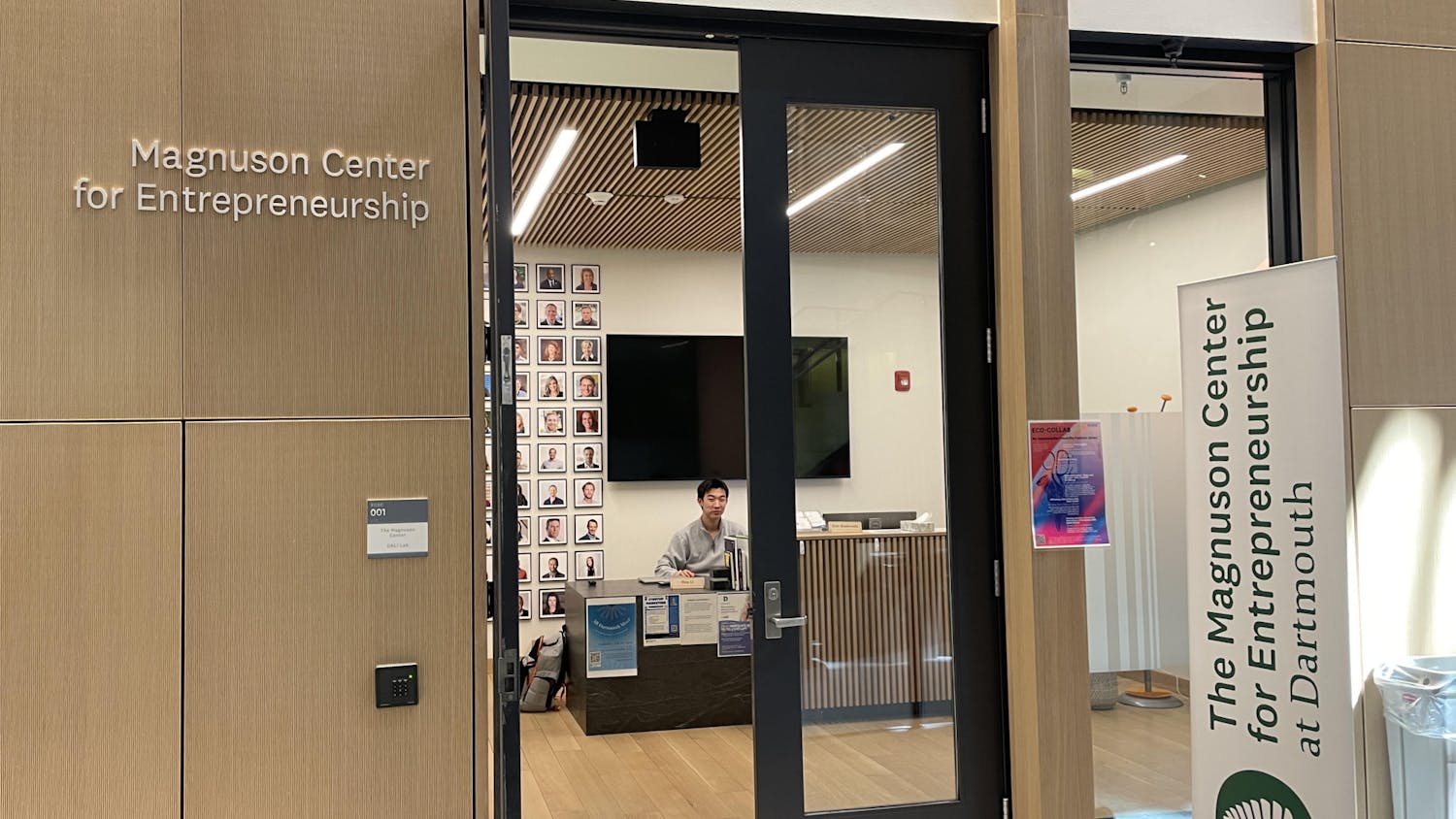Most people at Dartmouth today would have a hard time envisioning the campus without female students. But for 202 years, Dartmouth's alumni ensured the College would remain an all-male institution.
When serious discussion about coeducation began in the 1960s, the faculty were the strongest supporters of the move. Eventually, the idea grew on the students. But the majority of alumni did not believe women would or could make a positive contribution to the campus.
The move to coeducation could not have taken place without then College President John Kemeny's commitment to coeducation and his ability to create a plan for its execution that the alumni could swallow. Without Kemeny, the history of women at Dartmouth might be significantly shorter.
Now, 23 years after coeducation, the College has come quite a way from the early days, when newspapers and magazines published articles about Dartmouth's intolerance of its female population.
The Initial Debate
The first College committee to examine the question of coeducation was created in 1872. The committee's formation was inspired by the nearly universal coeducation of western universities, like Stanford University.
By 1879, the College had decided that single-sex education better facilitated learning. "Most people of sense appear to be well satisfied that there is a propriety in not herding young men and women together in our great institutions of learning," reported The Dartmouth in 1879.
The College began to seriously consider coeducation in 1956, when many colleges and universities began to admit women for economic reasons.
In response to a poll that found many students and a majority of faculty members supported a serious look at coeducation, then-College President John Sloan Dickey was asked to comment on coeducation.
"I haven't thought about it seriously," he told the Valley News in 1958. "I have great misgivings about its practicality and viability here."
By 1960, the College saw coeducation as a more urgent issue. It decided to expand the 1961-1962 academic year to four terms to include a Summer term. In the summer, women could take classes that would count towards their degrees at their own schools.
In 1965, The Dartmouth conducted another poll on coeducation. It found the students were split exactly in half on the issue and 71 percent of the faculty supported coeducation, but only 28 percent of the alumni even mildly favored coeducation.
Many alumni said they opposed coeducation because they thought the presence of women would distract the men from their academics and would destroy many of the College's traditions.
In 1969, the College conducted a coeducational experiment in which it bussed women up to the campus for "Coed Week." During this time, women were invited to participate in classes and campus activities.
Following Coed Week, the College decided to participate in the 12-college exchange program. While women participating in the exchange would not receive degrees from the College, they would have the opportunity to take classes at Dartmouth for a year. For the 1969-1970 school year, 70 women enrolled at the College.
Still, only 59 percent of alumni in 1970 said women should be educated and they could not agree on whether the College should continue in the exchange program, build a sister school or become coeducational.
As internal pressure to coeducate increased, the Board of Trustees established the Trustee Study Committee on Coeducation. The Trustee Committee recommended in 1971 that the College become fully coeducational, but it was aware that the alumni might not agree.
Kemeny's Year-Round Plan
Kemeny was selected as the College's 13th president in the spring of 1971. Soon after the announcement, he formed a committee to come up with a plan for "year-round operation."
Kemeny's committee presented its results in the fall of 1971. The committee's plan fully integrated the coeducation of the College with its year-round operation.
Dean of Residential Life Mary Turco wrote her doctoral thesis on the history of women faculty at Dartmouth from 1960 to 1990. Committee Chair Gregory Prince '63 told Turco the clever way the committee put together its plan.
"Part of the genius of [the plan] was that it was not separable. You couldn't have year-round operation without coeducation. The faculty wanted coeducation. They didn't want year-round operation, but were willing to change to get it," he said to Turco. "The Trustees didn't want coeducation, but they wanted year-round operation."
Many vocal alumni still opposed coeducation, said Turco, who enrolled as a graduate student at Dartmouth in 1973 and later went on to the work in the admissions office at the Dartmouth Medical School and then at the College.
The Board of Trustees voted on Nov. 21, 1971, to admit women in September 1972 as degree candidates and to begin year-round operation of the campus.
The vote to become coeducational was "by a substantial majority," Kemeny told The Dartmouth that day. The Trustees voted unanimously to approve the recommendations of Committee for Year-Round Operation and to call that system the Dartmouth Plan.
But Kemeny had an incredible ability to persuade the Trustees and was able to convince the Board to vote for coeducation.
"I don't think that he ever had more than eight solid votes on the Board at best and he put Dartmouth through an incredible period of change in an environment where [with] one solid reversal ... the flow would have gone the other way," Prince told Turco.
The 'Installment Plan'
The College was still uneasy about the introduction of women to the campus.
But the D-Plan allowed the College to admit women as 25 percent of each freshman class without decreasing the number of male students on campus at any given time during the academic year.
In an effort to appease the alumni, the College promised it would not allow the number of men on campus to fall below 3,000.
"I think it had to do with the perception if you fully coeducated too quickly, the alumni would be upset," Turco said. "There were internal checks and balances on numbers of women that would be admitted."
"One of the faculty I met told me we had coeducated on the installment plan," Turco said. "Now you would add a few more. You'd say, 'We can live with 300 women, lets go to 350 and see what happens.' We didn't just say, 'Okay -- sex-blind admissions.' "
In December 1971, the College received 7,362 applications for admission, of which 414 were from women. Many of the women first admitted to the College were members of the 12-college exchange program.
The "installment plan" created an environment in which the school refused to fundamentally change for the women, Anne Bagamery '78 wrote in the Alumni Magazine in 1988.
"Dartmouth isn't going to change much to accommodate you, so you'd better change to accommodate Dartmouth," she wrote. " 'Fitting in' became the order of the day, as manifested in rituals from learning to chug beer during Freshman Week to singing 'Men of Dartmouth' at graduation."
Dean of Student Life Holly Sateia was hired by the admissions office in 1974 to recruit female students. Sateia said women were constantly aware of the prevailing College attitude toward change and were hesitant to create any more change at Dartmouth.
"They did feel that they better not rock the boat," she said. "They've already rocked it enough by being on the campus, they better not rock it any more than that."
The Problems With Women
The issues stemming from the College's not adequately preparing for women quickly attracted media attention and began to shape Dartmouth's image as being misogynist.
"Seventy-nine was a time you just didn't want to open the paper as an admissions officer, because every time we opened the paper you felt there would be something in there about either the way students of color were treated at the College or the way women were treated at the College," Sateia said.
Turco said some of the first women here were disillusioned with some of their experiences at Dartmouth and were eager to tell the press.
Whether or not their numbers were enhanced by the media, many real incidents of misogynist behavior did take place during the 1970s.
Women were referred to as "cohogs," a term derived from quahog -- a derogatory term used to describe the female genitalia.
John Meyer '74 told Boston Magazine in 1983 there were a lot of pressures on women at Dartmouth at the time.
"I really though the school wasn't going to make it," he said. "The women had to be tough as nails. The men really gave them a rough time ... Women weren't treated as people, they were treated as women. They were sex objects and were typecast as either prudes or prostitutes."
The College offered a philosophy seminar in 1977 titled "Feminism and Revolution." The students in the seminar produced a video called "You Laugh."
The video "was the first time people openly expressed the love-hate relationship that women had with Dartmouth," Sateia said.
"Many of the women involved in the 'You Laugh' video were legacies," she said. "One of the things I think that they were troubled by the most was that they had come to this place expecting to replicate the experience that their relatives had here ... and they were having far different experiences. They were not feeling embraced into the Dartmouth family."
She said this video had a great impact because of the way it was presented. In included clips of the winning song of the Hums contest during Greek Key weekend that year -- "Our Cohogs."
The song's lyrics, sung to the tune of "This Old Man," included lines like "Our cohogs, they play one, 'Cause of them we have no fun," and "Our cohogs, they play eight, because of them we masturbate."
Sateia, who described the song's victory as "demoralizing," said it reflected poorly on students and administrators who voted for it.
Recruiting Women
The negative publicity that was specific to women's experiences at the College was difficult for admissions officers to overcome, Sateia said.
Sateia said when she tried to convince women to come to Dartmouth, she did not try to paint a picture of a campus where nothing was wrong.
"The way that I presented it to high school students was not that all the battles had been fought and won, but more come and join us in the struggle," she said. "Take advantage of the wonderful academic opportunities here and join us in the struggle to create a coeducational institution here at Dartmouth."
She said she could not paint a rosy picture of life for women at Dartmouth because the media had already done the opposite.
"We would give group presentations where we would say all these positive things about the College," she continued. "The first hand up after the group session is, 'Is it true all the stories about, you know, how women are treated at Dartmouth?' or 'Is it true that women are, you know, mistreated at Dartmouth?'"
The College's sex-blind admissions policy was instituted for the Class of 1981, Sateia said. "Basically what they said was men and women would not be treated differently in the admissions process," she said.
While the Class of 1980 had only 278 women, there were 410 women in the Class of 1981. Sateia said the College expected to be a complete gender equity by 1990. The College still has not had a class that had more women than men.
Now, 23 years after coeducation, the Class of 1998 is almost 50 percent female. And an increasing number of women are applying to the College.
Dean of Admissions and Financial Aid Karl Furstenberg told The Dartmouth the number of women applying to the College is increasing faster than the number of men.
He attributed this to a growing "perception of Dartmouth as a place that is hospitable for women."



